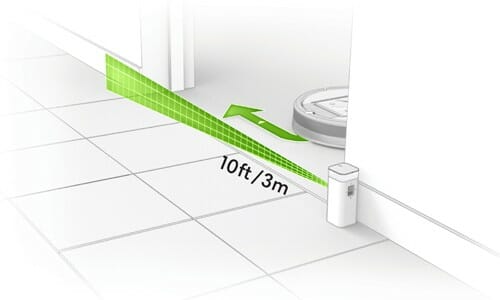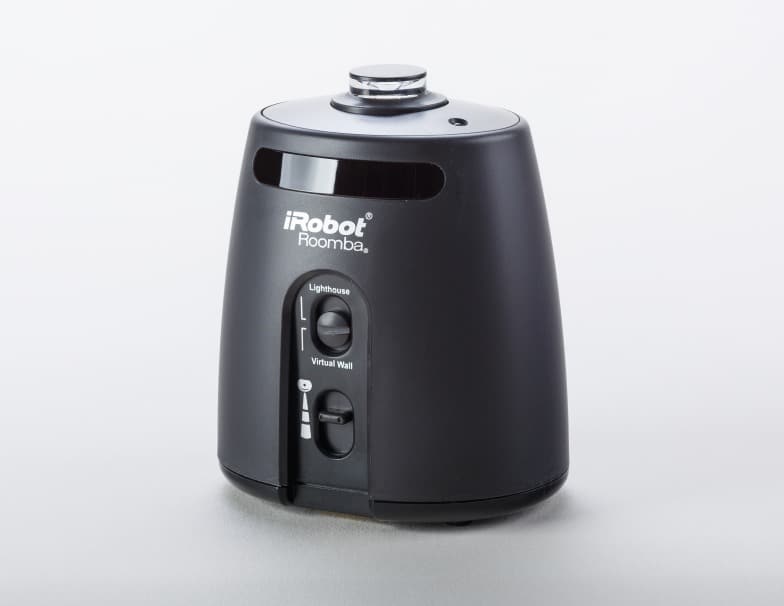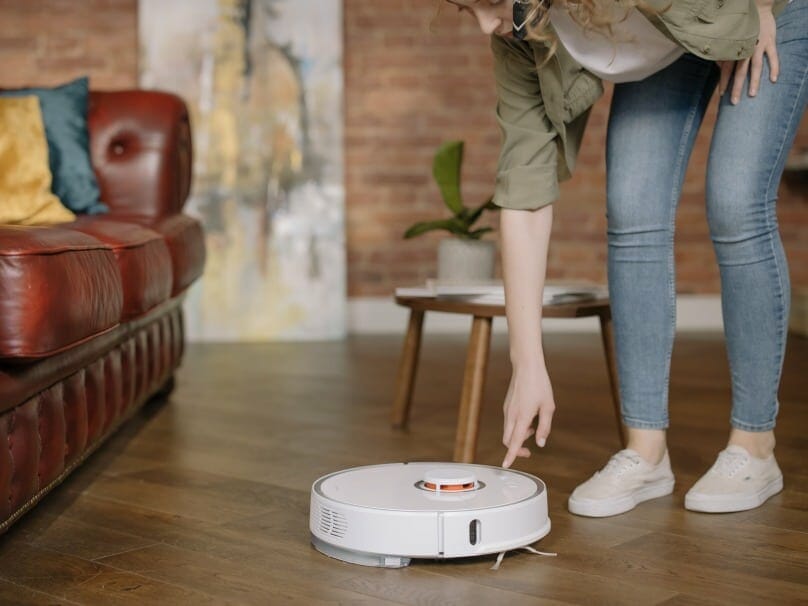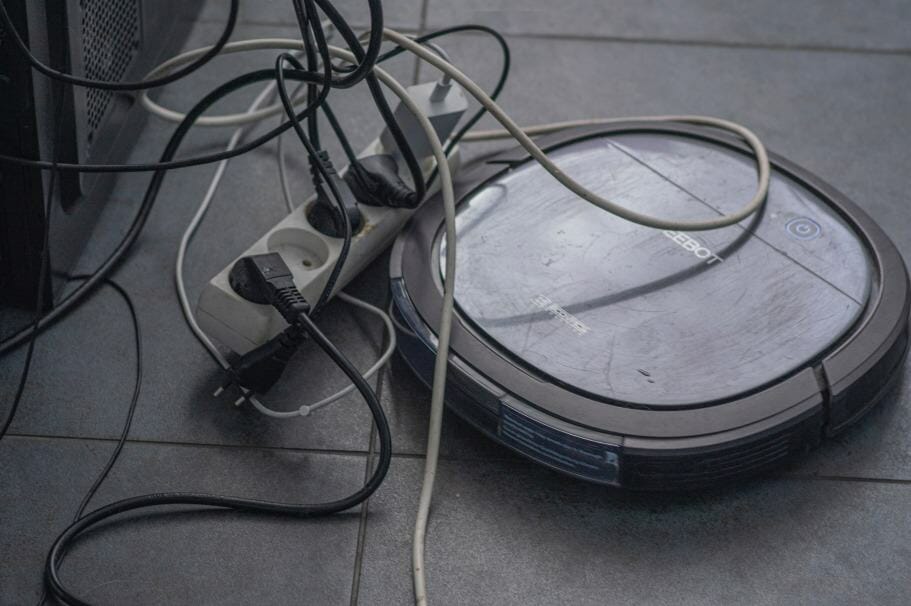What’s the difference between virtual walls vs lighthouses? If you have a robovac (short for robot vacuum), then you may have heard of these two navigation features. But what are they really? Here is an explanation of what these two are and how they compare to each other. If you also don’t have a built-in virtual wall or lighthouse in your robovac, this post will help you decide which one to get if you don’t want to buy both.
What is a Virtual Wall?

A virtual wall is relatively easy to understand simply because the name gives it away. This navigation device creates a virtual wall using infrared light. This light will be detected by your robovac and when they do, they will turn around and go the other way. They won’t even attempt to pass through it - they’re robots after all, so they will simply stick to their programmed rule which is to not pass through the light given off by a virtual wall.
The virtual wall works by having the device set up on the floor. You can place it beside the wall, doorway, or any other ornament that you want your robovac to avoid. When you turn it on, it creates an inverted cone-shaped virtual wall. Since it’s an inverted cone shape, the off-limits area gets wider the farther it is from the device. This ensures that the robovac doesn’t come anywhere near the things you want to protect.
Virtual walls are often used beside things that are fragile, but they can also be used alongside food bowls for your pets. Just place them near the bowl and your robovac won’t trip over it.
Why You Need a Virtual Wall
There are many reasons why you need to get a virtual wall. If you’re not convinced that you need it enough, here are some of the things a virtual wall can do for you.
- It can confine your robovac to specific areas.
The main purpose of having a virtual wall is that you can keep your robovac in areas that you want to be cleaned while keeping them out of areas that you want to be left alone. Let’s say you want your robovac to stay in the living room and not go to the kitchen; a virtual wall can help you with that. Just set them up in the doorway to the kitchen, and the robovac stays right in the living room.
- You don’t have to worry about things falling or breaking.
If your house has pots, vases, class structures, then you definitely don’t want your robovac knocking them over. If you have a virtual wall, you don’t have to worry about this. The best thing about this is that it eliminates the additional step of prepping your room to be breakage-free. If you leave the virtual wall there, a simple activation of the devices can allow you to start the cleaning process right away. There’s no need to put the pots up and remove the vases from where they were.
- It can be used to map out areas that need to be cleaned.
Another great thing about the virtual wall? It helps you plot the areas that you want to be cleaned. What does that mean? Is it like a guide? Technically, it isn’t, because it doesn’t guide your robovac to go to a certain place. Instead, it restricts areas so your robovac has no choice but to go to places that aren’t restricted. For example, if you want the robovac to clean the hallway, then you place the virtual walls on the doorways of your room. That way, it doesn’t go to the rooms and just cleans the hallway area.
What is a Lighthouse?

Just like an actual lighthouse, a lighthouse in robovac language is a navigation device that “guides” your robovac from one area to another. No, it’s not a walking robot that your robovac follows, but it’s a set of lights that turns on and off for your robovac to follow.
How does that work? Picture this - you have several rooms and you want your robovac to go to one room after cleaning the first room. When a lighthouse is set up, it acts as a virtual wall in the entryway to the next room. This means that the robovac can’t cross a room when the first room is not fully cleaned. When it’s already cleaned, the lighthouse “opens” the other room signaling to your robovac to clean it.
In essence, the lighthouse works like a real lighthouse that guides your robovac from room to room. Depending on how you place it around your house, you can direct your robovac to clean the whole floor and even mop it, without having to repeat cleaning the other rooms.
Why You Need a Lighthouse
You might be thinking that a lighthouse is just another way for you to spend on a device. Well, yes, you’re going to spend again if your robovac doesn’t have it, but it’s a very helpful addition. Why? Here are three reasons.
- It can chart a path for your robovac.
Admit it, nothing can make directing the robovac easier than the lighthouse. With a lighthouse in your home, you can make your robovac more efficient as it goes around your house. A lighthouse also maximizes your robovac’s cleaning capacity by making it go to places on its own without you turning the device on or off after every room that the robovac has cleaned.
- It manages the area where the robovac cleans.
Another cool thing about the lighthouse is that it acts as a manager to your robovac. Before it opens the wall to another room, it checks if the robovac has cleaned the current room thoroughly. If not, the virtual barrier stays up until the room is cleaned. It’s like your own personal housekeeper.
Which One is Better?

So you have a Roomba 620 which doesn’t have any navigation control device built into it. What do you get? If you thought that older robovacs are hopeless when it comes to getting a navigation control, you’re in luck now because older versions of the Roomba can still connect with these navigation devices. The only catch here is that you have to buy them separately from the robovac.
What should you get? To help you compare the two, here is a quick rundown on the major difference between the two navigation devices.
- The lighthouse directs while the virtual wall blocks.
The main difference between the two is what they really do. The virtual wall prevents your robovac from cleaning a certain area. On the other hand, the lighthouse acts as a virtual wall and a guide - the lighthouse also has the capability to guide your robovac from one place to another.
- The lighthouse acts as a virtual wall, too.
If you didn’t know, the lighthouse also acts as a virtual wall. How? Well, when the first room isn’t cleaned yet, the virtual barrier that the device has put up will not be turned off, therefore, limiting the areas the robovac can go. If you haven’t set up commands as to when the virtual wall will come down, then the robovac stays in one place. It’s easily a 2-in-1 device which makes it a better option for people who have to choose between it and the virtual wall.
- The lighthouse is less compatible with different models.
Don’t be fooled, though, because even if the lighthouse looks like the better option, it also has its own disadvantages. Compared to the virtual wall, the lighthouse has fewer models that it is compatible with. The virtual wall is compatible with almost every robovac while the lighthouse can only connect with some 500 series models, 780, 790, and 880. If you have a 650, 620, or a 400 series model, then a virtual wall will be the navigation device that you can buy.
- The distances the two can block are different.
The virtual wall can block doorways that are 7 feet wide while the lighthouse can block doorways that are 10 feet wide. If you have a small doorway, then buying either of the two will work out well. However, if you have a big doorway, then the lighthouse is something that you would need unless you are willing to buy more virtual walls.
Keep in mind that choosing between a virtual wall and a lighthouse is something you don’t have to do all the time because more modern models of the robovac have a navigation device that comes along with it. If you’re buying a newer model, you might not have to choose between the two at all.
Conclusion
The virtual wall and the lighthouse are two very different navigation devices that have the same goal in mind - to keep your robovac in the area that it’s supposed to clean. While they manage this very differently from each other, each has their own pros and cons. When choosing between the two, make sure to assess what you really need and what you’re planning to block off from your robovac.


